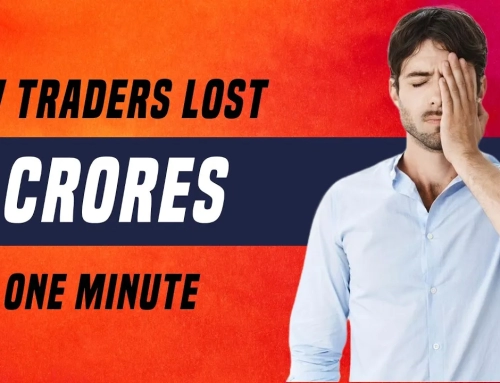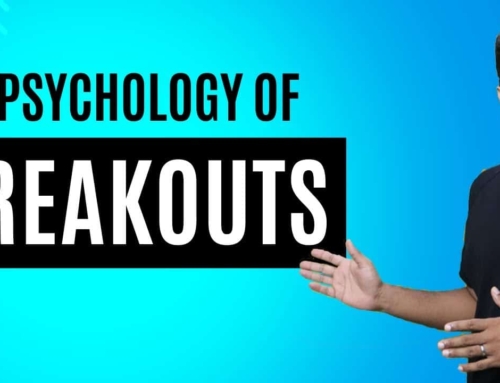What is Piotroski Score
Introduction
Piotroski score is a very easy and intuitive way to screen for fundamentally strong companies. The framework was developed by a Stanford University professor Joseph Pitroski, who observed that there is a simple way to evaluate the stocks without breaking our heads
What is Pitroski Score?
Piotroski said half of our problems come from the fact that we get too much entangled with the nuances and don’t focus on the big picture so he said you know what let’s make everything black and white let’s not have any gray areas so he identified nine criteria based on which he evaluated the companies and he said on each of these criteria if the company is doing good i will give it one point if it’s not doing good i will give it a zero point
and when we add up all the score if a company gets let’s say 8 or 9 it should be considered as a fundamentally good company and if it is scoring less than that it should be classified as a fundamentally weak company right and the reason this model became so famous is because using this model
Piotroski ran a backtest on several years of data where he bought the companies with high Piotroski score and shorted the companies with low Piotroski score and he attained an ROI of over 20 the percent which is very very impressive in a long run so what were those nine criteria let’s go one by one so the first one returned on asset which means how profitable a company is with respect to its asset and this particular criteria is especially important for manufacturing companies so Piotroski said let’s make everything simple if the return on asset is positive we will give the company one if the return on asset is negative we will give the company zero.
the next criterion were operating cash flow which is a very important measure of how much cash a company generates from its core business and it is very important for its survival of course so again if the operating cash flow is positive the company will get a score of one if it is negative the company will get a score of 0. now the third criteria was a change in return on assets so if you remember that criteria number 1 was written on the asset so in the criteria number 1 we only checked whether the return on asset is profitable or not right but in this criteria we are comparing the return on asset of this year from that of the last year and if the return on asset is improved we give the company a score of 1 and if the return on the asset has deteriorated we give the company zero the next criteria is that of accruals which is more of an accounting criterion which basically measures uh the company’s revenue and profitability with respect to their non-cash transactions and again if the accruals are positive we give the score of one if the accruals are negative we give the score of zero the next criteria were very simple long-term debt if the company’s long-term debt has reduced as compared to the last year give it one point and if it has increased then give it a zero point and the next criteria were current ratio which is a measure of companies ability to pay long-term debt and if the current ratio of the company has improved as compared to that of last year then yes give it a point if not give it zero the next criteria is about the number of shares that a company has issued right so it basically tells about the
ownership of the company so Piotroski basically wanted that a company should not dilute its shareholding so if the company has not diluted its shares then give it a point one and if the company has diluted the shares then give it is a zero point and the last two criterias were also very straight forward the gross margin which is basically total revenue minus total cost rights of the gross margin has improved year on year then give it a point one if it has deteriorated then give it zero and the last criterion is asset turnover ratio which is a financial ratio that measures the efficiency of a company’s use of its assets in generating sales so if the asset turnover ratio has improved over last year then one point if it has deteriorated then give it zero points so if we look back at all these nine criteria three of the criteria are directly related to the utilization of the company’s assets so Piotroski score puts a heavy emphasis on how a company is utilizing its asset to generate revenue and being profitable so guys so far we have seen the theoretical framework of Piotroski school but some of you might be thinking okay it’s good to understand how all these things work but it’s not practically possible for me to go and check each and every company on these nine criteria right so there must be a faster way of screening stocks based on petrovsky score and yes there is one so the website that i’m looking at right now is called screener. and you can come to this website and you can go to the screens tab and you will see that there is a ready-made scan for this it’s called Piotroski scan it’s right at the top and here it tells you that it is based on the Piotroski score of 9 factors that we already talked about so these are all the companies and what you can also do is you can come down here and so this is purely based on Piotroski score but what you can also do is you can add more criteria here of let’s say based on market
capitalization let’s say greater than a thousand crores right so something like this and then you can just keep adding more and more criteria along with Piotroski score to get more customized results based on your requirement so guys this is it this is basically what I wanted to share in this video i hope that you understood what Piotroski score is all about and how to use in real life investing..
Zerodha has introduced a new order type called Iceberg orders. Today we got a chance to test it out firsthand and decided to make a video about it and also talk about the different aspects of using this order type. So let’s get started. What exactly are these Iceberg orders? Iceberg orders are a way to break down one big order into multiple small orders.
These orders were originally created for big institutions or HNI clients who had big order sizes and they did not want people to know that they’re placing these big orders. Hence, they broke these orders into multiple small orders so that people would not know that there is a big participant out there and hence their actions should not influence the price of the script that they are trading.
Let me show you how I used the Iceberg order today. As you can see, my order sizes normally are big, especially on expiry days. If I have to exit these orders, I cannot place one order. For example, let’s say 3000 quantities. As you can see here, I cannot just place one order of 3000 quantity because I will hit the order freeze limit.
Normally what I used to do until now was just to place separate orders. In this case, let’s say two orders of 1500 quantities each and that involved a lot of manual effort. Now, thanks to Iceberg, what I can do is I can come to this screen and specify the full quantity, say, 3000 in this case. I can instruct them that the order quantity of 3000 is to be broken down into two orders, say 1500 each.
I then give my limit price and I’m going to place the order. Now, in this particular case, the one thing that you need to understand is that the 3000 quantity has been broken down into 2 separate orders of 1500 each and the way it works is that only after the first order is executed, will the second order get placed.
They go sequentially one after the other. Hence, if you see closely, it will tell you that this is the first order out of the 2 orders that we have placed. It is only after the first order will get executed, the second order will be placed and this is all it is to Iceberg Orders. There is no rocket science behind all this but there are a few things that you need to keep in mind.
Number one is the brokerage and that is because, for every separate order, you have to pay brokerage. The second thing that you need to keep in mind is that if you have, let’s say multiple legs and you cancel Leg 2 or 3, then that leg and the subsequent legs will be cancelled automatically.
Apart from that, Zerodha has a few limitations in terms of the minimum order for equity and for Futures and Options. That is something you need to keep in mind.
Now, there is one thing that I did not try out today, but you guys should definitely know about it. It is that in the case of Iceberg orders, if you go to “More Options”, Zerodha has given the feature of specifying the minutes.
Here, you can specify how many minutes that you want this order to be active before it can be cancelled. Overall, I think that this feature is going to be good for option traders who deal in multiple lots or traders who are trading in bigger volumes, but for an average trader who deals with just a few lots or maybe let’s say within 4 to 5 Lakhs rupees of capital, I do not think it is advisable to use Iceberg orders because unnecessarily you will be increasing brokerage charges.
One last word of caution is that before you start using any method, ensure that it is tested totally so that you know how the system works and only when you completely understand it and are confident that it works consistently, that you start trusting it with your capital.



![What is Virtual Contract Note [Zerodha]](https://www.vrdnation.com/wp-content/uploads/2023/10/maxresdefault-virtual-note-500x383.jpg)



Leave A Comment